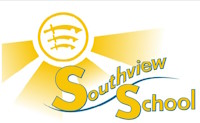Phonics & Reading
Teaching phonics at Southview School
At Southview School, we take a whole school approach to teaching phonics. This enables children to acquire and secure automatic decoding skills, supporting them to progress from learning to read, to reading to learn for purpose and pleasure. Grapheme-phoneme correspondence, blending and segmenting is taught in a clearly defined, incremental sequence, and phonic work is differentiated according to the skills of each child. It is taught as part of a broad and rich curriculum that engages children in a range of activities and experiences to develop their speaking and listening skills and phonological awareness.
The teaching of phonics for children with communication difficulties can be problematic. Children without any form of verbal communication cannot articulate or learn how to blend and sound out the words, which can be a block to them learning to read phonetically. Many of our children do not learn to read by using phonics at all, and may respond better to using the whole word approach, or by using a combination of symbols with the written word, which is often favoured by children using AAC to communicate. Although they may not learn to read in this way, having a knowledge of basic phonetic skills may equip them to decode words later, or enable eye gaze users to access vocabulary on their devices which is stored alphabetically. Some students use a phonetic keyboard to hear the sounds of letters and letter blends which enables them to spell and identify words on their device.
As a school we practice a consistent approach by using the Jolly Phonics scheme. This decision was based on its use of a physical actions along with repetitive rhymes which gives all which reinforces the sound for children, and many will be able to sound out words using physical actions.
The teaching of phonics at Southview School is a multi-sensory experience, encompassing simultaneous visual, auditory, and kinaesthetic activities to engage core learning. It is systematic and follows a carefully planned programme which reinforces and builds on previous learning to secure progress within classes. There are opportunities to reinforce skills across the curriculum, such as having a ‘sound of the week’ activity. Children’s progress in developing and applying their phonic knowledge is carefully assessed and monitored. Teachers know their children well, and are flexible and sensitive to know where they may need extra support with using picture/symbol and whole word teaching.
Reading at Southview School
Southview School is unique in Essex as being the only PNI provision. Consequently, we have a wide range of ability throughout the school, from children working at early sensory levels, through to those able to read age appropriate literature, for whom we have developed a variety of opportunities to develop reading for pleasure. Reading is an integral part of what we do here, and each child will be nurtured and challenged to reach their full potential as they move through the school. We recognise that some of our children need an inclusive literacy programme, laid out in our PMLD curriculum, and others will follow a more ‘traditional’ route as laid out in our reading scale, which moves from dependence towards independence. At Southview, the functional use of reading is considered very important as pupils move through the school enabling them to live as independently as possible. Our children also face additional challenges with communication which can make learning to read phonetically difficult for them, and most use AAC as a support.

